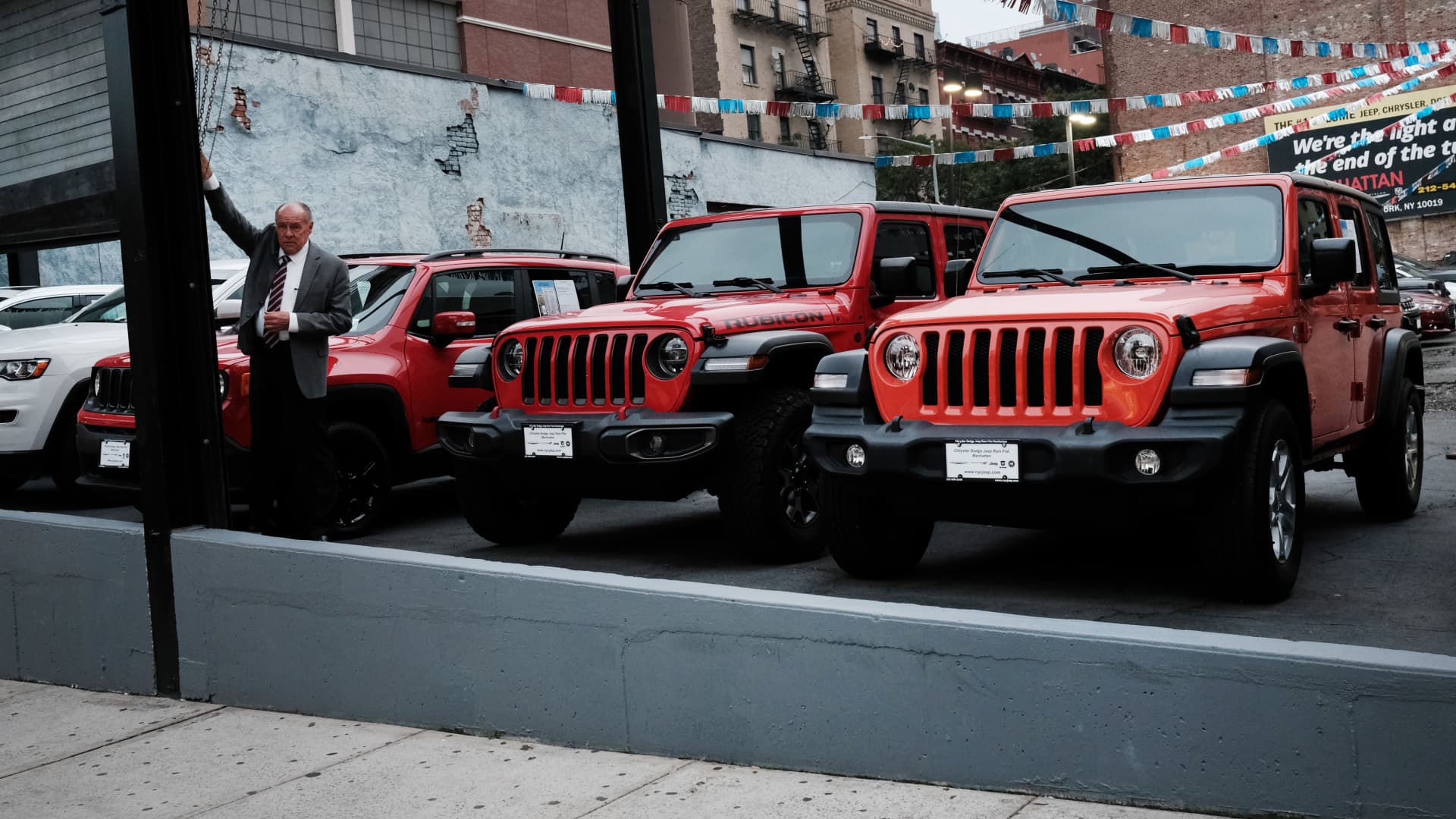Automakers will likely report sharp sales declines for March and the first quarter, industry analysts say, as an ongoing shortage of new vehicles has left car-shoppers with few – and often expensive – choices.
U.S. auto sales forecasts from Cox Automotive, Edmunds, and J.D. Power/LMC Automotive say that first-quarter sales of cars, pickup trucks and SUVs were likely below 3.3 million, down more than 14% from the first quarter of 2021.
For some automakers, the declines may be even worse. Edmunds expects General Motors, Honda, Nissan, and Volkswagen to report year-over-year sales declines of more than 20% for the first quarter, with Ford faring only slightly better.
But while sales are falling, prices are rising: TrueCar analysts said that the average selling price of a new vehicle in the U.S. likely rose 15.4% in March from a year ago, to nearly $43,500.
Consumer concerns about inflation – including higher gas and vehicle prices – likely played a role in the quarter’s projected sales decline, which includes an expected drop of at least 24% in March. But the biggest factor is the thin supply of new vehicles amid a global shortage of semiconductor chips.
“Skyrocketing gas prices were top of mind for consumers in March, but the lack of inventory is what ultimately depressed new vehicle sales in the first quarter,” said Jessica Caldwell, Edmunds’ executive director of insights.
Edmunds’ forecast calls for a 15.2% year-over-year decline in first-quarter auto sales. The company reported that inventories remain very thin, with just 20 days’ supply of gas-powered vehicles and 21 days’ worth of electric vehicles available. Automakers typically aim to have enough vehicles in inventory to last 60 to 70 days.
Not only are automakers still grappling with Covid-related supply-chain disruptions, Caldwell noted, they may now be facing additional supply challenges in the wake of Russia’s invasion of Ukraine.
U.S. auto sales have traditionally ramped up in March as spring weather arrives in much of the U.S., noted Cox Automotive’s senior economist, Charlie Chesborough. He thinks that consumer demand would probably be strong right now – if only automakers had more vehicles to sell.
“Low unemployment, relatively low interest rates — the conditions are right for higher sales,” Chesborough said. But, he said, until automakers are able to boost the number of vehicles on dealers’ lots, sales will remain weak.
“Make no mistake,” he said, “this market is stuck in low gear.”

ivermectin 12 mg for humans for sale – buy tegretol 200mg tegretol 200mg canada
order accutane 10mg – order dexona sale buy zyvox 600mg
azithromycin 250mg ca – azithromycin price buy bystolic without a prescription
prednisolone tablet – azipro pills buy prometrium 100mg generic
gabapentin generic – order clomipramine 25mg online order itraconazole for sale
generic furosemide – piracetam 800mg us how to buy betamethasone
augmentin ca – order amoxiclav pills duloxetine 40mg pills
buy semaglutide 14 mg without prescription – purchase vardenafil pills generic cyproheptadine
order tizanidine 2mg pill – generic plaquenil 200mg buy microzide 25mg pills
viagra usa – tadalafil 40mg for sale cialis drug
buy tadalafil 40mg generic – cialis 5mg ca sildenafil 50mg for sale
You managed to clarify a difficult subject with simplicity; amazing job!
I loved the personal detail you added to your post; it made it more relatable.
generic cenforce 100mg – order generic aralen 250mg buy cheap glycomet
order lipitor 10mg pills – zestril usa order lisinopril 2.5mg without prescription
I always enjoy the variety of topics you cover on your website. There’s always something fresh to learn.
I love the practical advice you’ve included; it makes implementing your recommendations simpler.
omeprazole over the counter – order generic tenormin 50mg order tenormin 50mg sale
methylprednisolone 4 mg without prescription – triamcinolone oral order aristocort 4mg sale
desloratadine brand – claritin generic priligy online order
misoprostol online buy – buy cytotec 200mcg for sale diltiazem brand
buy zovirax for sale – zovirax us crestor 10mg generic
domperidone 10mg cost – flexeril 15mg oral cyclobenzaprine 15mg for sale
order domperidone for sale – buy generic sumycin over the counter flexeril brand
buy propranolol for sale – propranolol uk order methotrexate 10mg generic
buy coumadin 2mg for sale – buy losartan online cheap losartan 25mg tablet
esomeprazole online order – nexium 20mg pill order sumatriptan 25mg generic
mobic us – celebrex 200mg over the counter buy tamsulosin 0.2mg pill
purchase ondansetron – order spironolactone 100mg sale buy simvastatin 20mg pills
purchase valacyclovir sale – diflucan 100mg ca order diflucan without prescription
modafinil oral buy modafinil tablets order modafinil 100mg sale buy provigil without a prescription buy modafinil for sale generic provigil 200mg modafinil 100mg drug